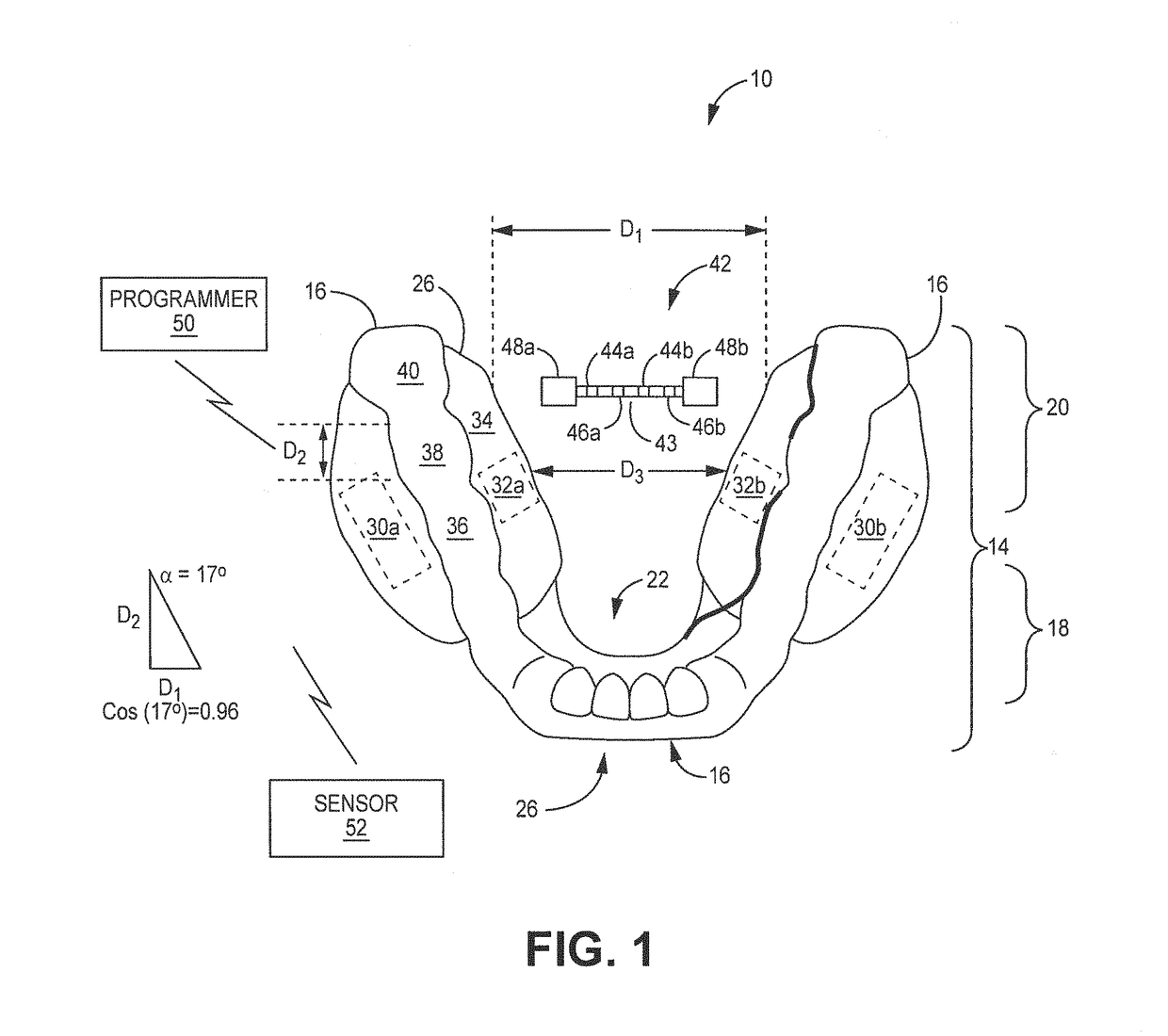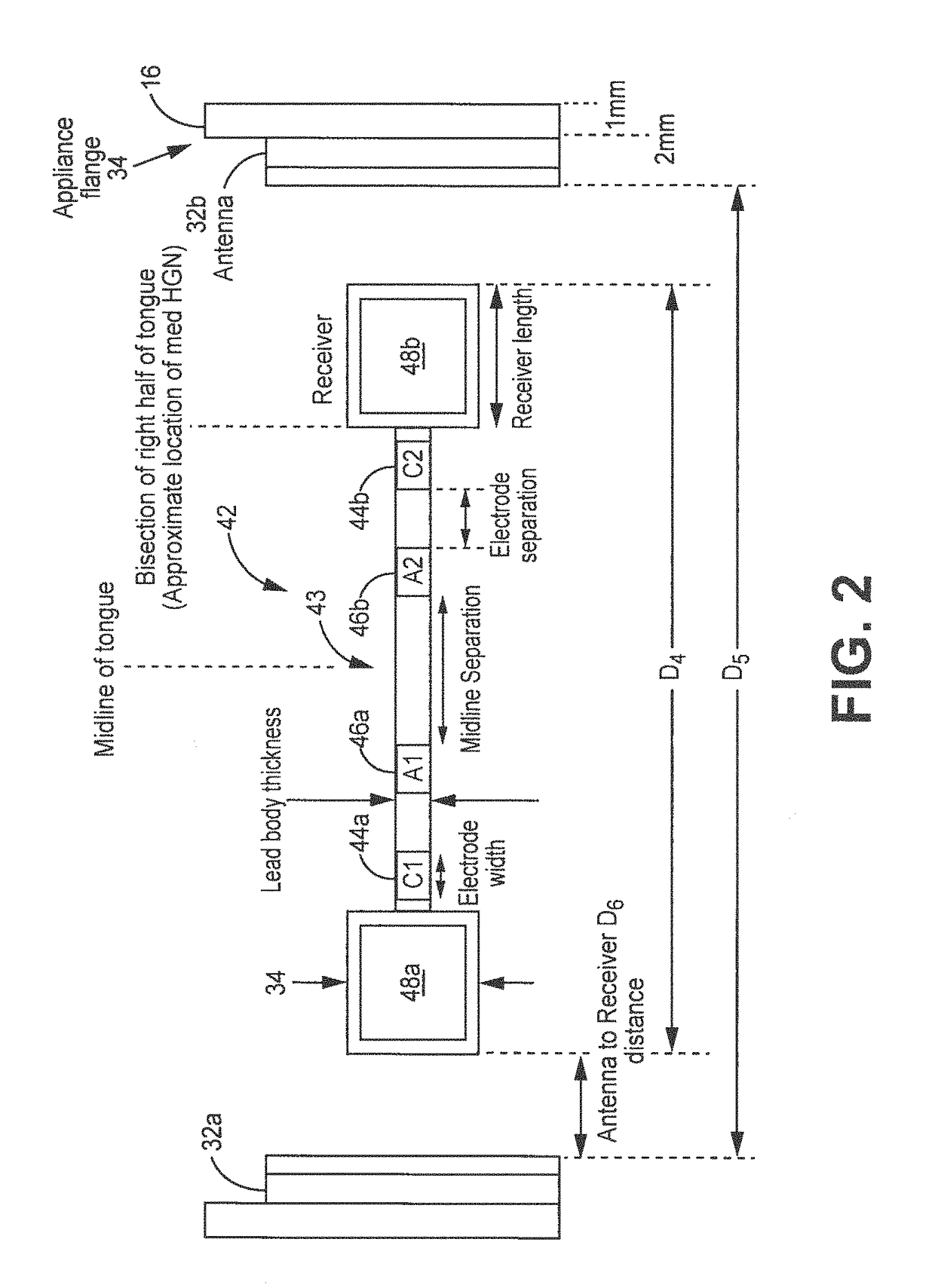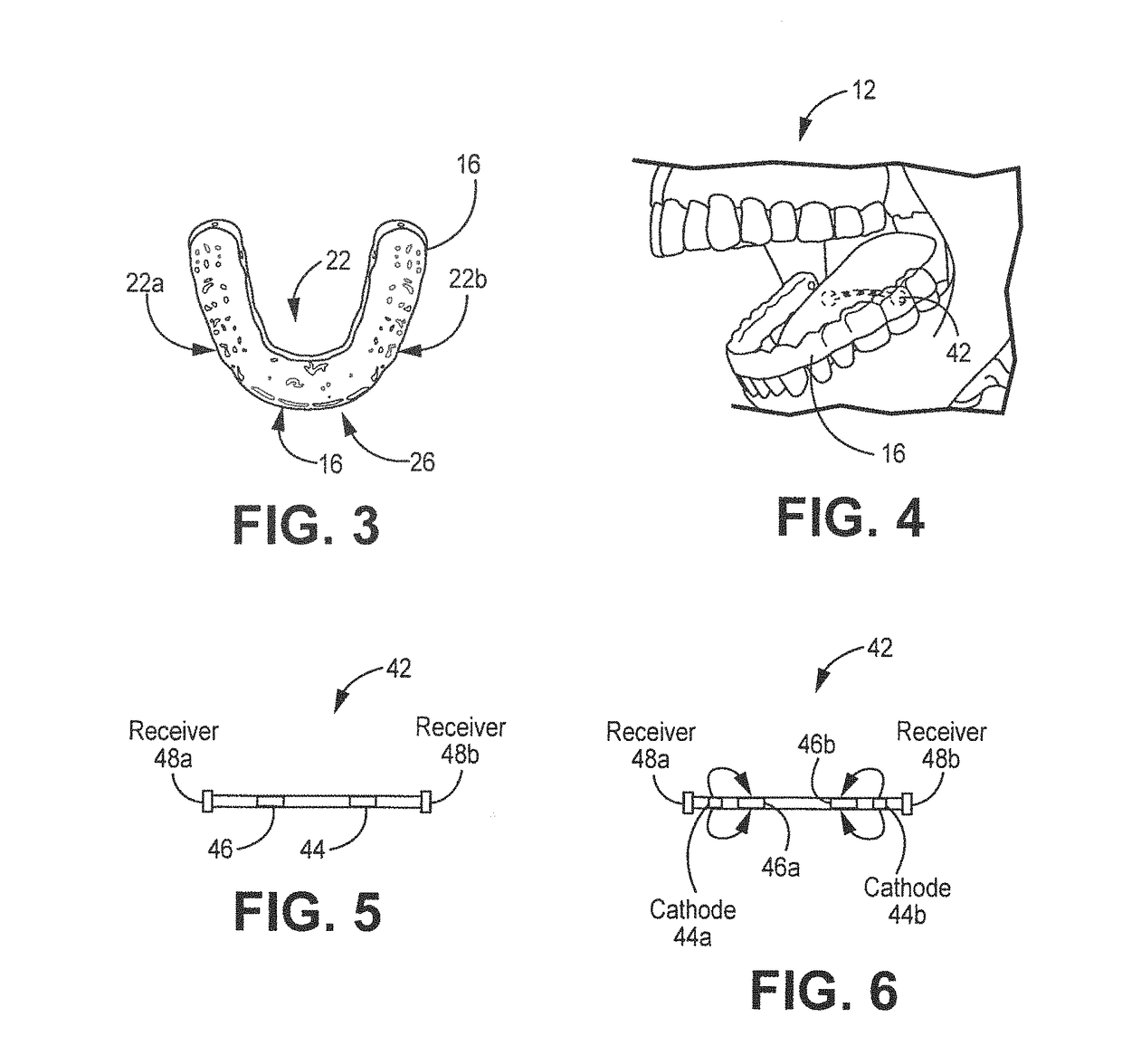Neural stimulation to treat sleep apnea
a technology of neural stimulation and sleep apnea, which is applied in the field of neural stimulation to treat sleep apnea, can solve the problems of many equipment or medical support, the device lacks a sensor to sense respiration, and the technique can be performed, so as to avoid fatigue, improve the effect of bilateral stimulation of the hypoglossal nerve, and reduce the risk of morbidity
- Summary
- Abstract
- Description
- Claims
- Application Information
AI Technical Summary
Benefits of technology
Problems solved by technology
Method used
Image
Examples
embodiment 1
Embodiment 2 is a system of embodiment 1 wherein delivering electrical signals occurs without monitoring any phase of respiration.
[0100]Embodiment 3 is a system of any of embodiments 1-2 wherein the lead having a longitudinal axis extending from a first and a second end, the one or more electrodes comprising first and second electrodes at the first and second ends, respectively the first electrode positioned proximate a first hypoglossal nerve and the second electrode positioned proximate a second hypoglossal nerve.
embodiment 4
is a system of any of embodiments 1-3 wherein the lead being curvilinear extending from a first and a second end, the one or more electrodes comprising first and second electrodes at the first and second ends, respectively the first electrode positioned proximate a first hypoglossal nerve and the second electrode positioned proximate a second hypoglossal nerve.
embodiment 5
is a system of any of embodiments 1-4 wherein the neural tissue comprises at least one of first or second hypoglossal nerves.
PUM
 Login to View More
Login to View More Abstract
Description
Claims
Application Information
 Login to View More
Login to View More - R&D
- Intellectual Property
- Life Sciences
- Materials
- Tech Scout
- Unparalleled Data Quality
- Higher Quality Content
- 60% Fewer Hallucinations
Browse by: Latest US Patents, China's latest patents, Technical Efficacy Thesaurus, Application Domain, Technology Topic, Popular Technical Reports.
© 2025 PatSnap. All rights reserved.Legal|Privacy policy|Modern Slavery Act Transparency Statement|Sitemap|About US| Contact US: help@patsnap.com



